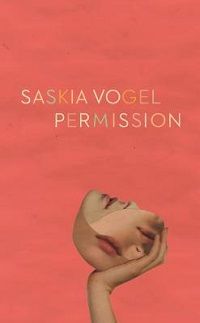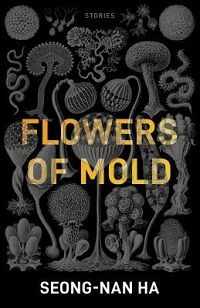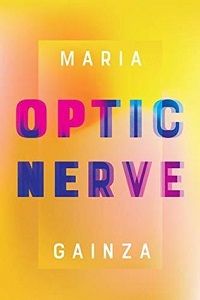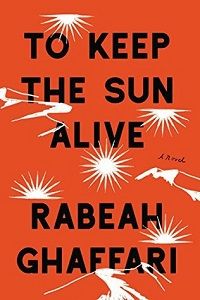This month, I have five books coming out in April for you, plus a bonus pick from earlier this year, plus a handful of books I haven’t read yet but am intrigued by. Check them out and maybe preorder or add some to your TBR!
Permission by Saskia Vogel (Coach House Books, April 9)
This novel is a first-person account of a young woman’s struggles after her father unexpectedly dies. She has been living in Los Angeles trying to make an acting career work, but after the loss of her father, she returns home to be with her mother and to regroup. She meets the woman from across the street, is intrigued by her, and learns that she is a dominatrix. The story of their relationship takes up much of the novel. It’s a beautiful study of grief, friendship, and sexual discovery, the kind of novel that dives deep into character. It perfectly captures what it’s like to be young and in pain, trying to make sense of yourself and of the world.
Acts of Infidelity by Lena Andersson, Translated by Saskia Vogel (Other Press, April 23)
It wasn’t until I was well into this book that I realized it was translated by the author of Permission, the book I’d just finished! The two novels are very different, but I thoroughly enjoyed them both. Acts of Infidelity tells the story of Ester Nilsson, a writer and critic in Sweden, who meets and falls in love with the actor Olaf Sten. They start a relationship, Ester assuming Olaf will end his marriage for her, and Olaf convinced he won’t. It’s a familiar story, but Andersson tells it with energy and wit, and her psychological insights make the twists and turns of the relationship engrossing. This is Andersson’s second novel about Ester Nilsson, but familiarity with the first isn’t necessary to read this one.
Flowers of Mold & Other Stories by Ha Seong-nan, Translated by Janet Hong (Open Letter, April 23)
These short stories are captivating. They are realistic, more or less, but also deeply unsettling and strange. Ha Seong-nan is a Korean writer, and many of her stories are about life in and around Seoul, about people’s experiences in apartment buildings, parks, and workplaces, about life on crowded buses and office complexes. Advertising messages on billboards feature prominently. Her characters are trying their best to get by, and I found them deeply sympathetic, but they often face obstacles they just do not know how to confront. The stories are beautiful, inventive, gorgeously-written, and often heart-wrenching.
Optic Nerve by Maria Gainza, Translated by Thomas Bunstead (Catapult, April 9)
This is a novel for those who like meandering, idea-driven, genre-bending fiction—most definitely a favorite form of mine. The narrator lives in Buenos Aires and is obsessed with art. The novel moves between stories from her life and meditations on art and the lives of artists, including Rothko, Courbet, El Greco, and Henri Rousseau, among others. The narrator writes from the perspective of both an insider and outsider: she is a recognized art historian but one who is afraid to fly to Europe to take part in art world gatherings. She has access to great museums in Buenos Aires but they often don’t have the most famous works. She is a thoughtful narrator, and her ideas and observations are a delight.
All the Fierce Tethers by Lia Purpura (Sarabande Books, April 9)
This is an essay collection that reads like poetry. It’s beautiful and will make you look at the environment around you differently. The pieces are largely about nature and the experience of being in the world, of trying to live fully and truly see what is happening around you. It’s a short book, barely over 100 pages, but it’s worth reading slowly and savoring. In fact, it asks you to slow down and take your time with it, because the writing is so rich. If you are an essay reader, a poetry reader, or someone who likes nature writing of any kind, I think you will enjoy this.
To Keep the Sun Alive by Rabeah Ghaffari (Catapult)
This novel is my pick from earlier in the year. It’s set mostly in Iran and partly in Paris, and takes place in the lead-up to the Iranian Revolution of 1979. It goes to some dark places, as one would expect from a novel about political upheaval, but so much of it is a quiet family novel, about family lunches, tensions in marriage, generational misunderstandings, young people falling in love. It shows the before and after, immersing you in everyday life pre-revolution and letting you see how that life begins to fall apart. It’s absorbing, with memorable characters, and a riveting look at the uncertain times before a world-altering political and social shake-up. Finally, I have a few books out in April that are going on my TBR for later reading: Meander, Spiral, Explode: Design and Pattern in Narrative by Jane Allison (Catapult, April 2): literary criticism that looks at narrative forms beyond the typical “narrative arc,” such as spirals, meanders, and explosions. Days by Moonlight by André Alexis (Coach House, April 2): a road-trip novel through small-town North America—a contemporary version of Gulliver’s Travels. Princess Bari by Hwang Sok-yong, translated by Sora Kim-Russell (Scribe US, April 16): a quest novel about a girl who escapes from North Korea in the 1990s and travels through China to London, where she must make sense of an entirely new culture. A Change of Time by Ida Jessen, translated by Martin Aitkin (Archipelago, April 16): a story about a woman trying to make sense of and rebuild her life after her husband’s death.






